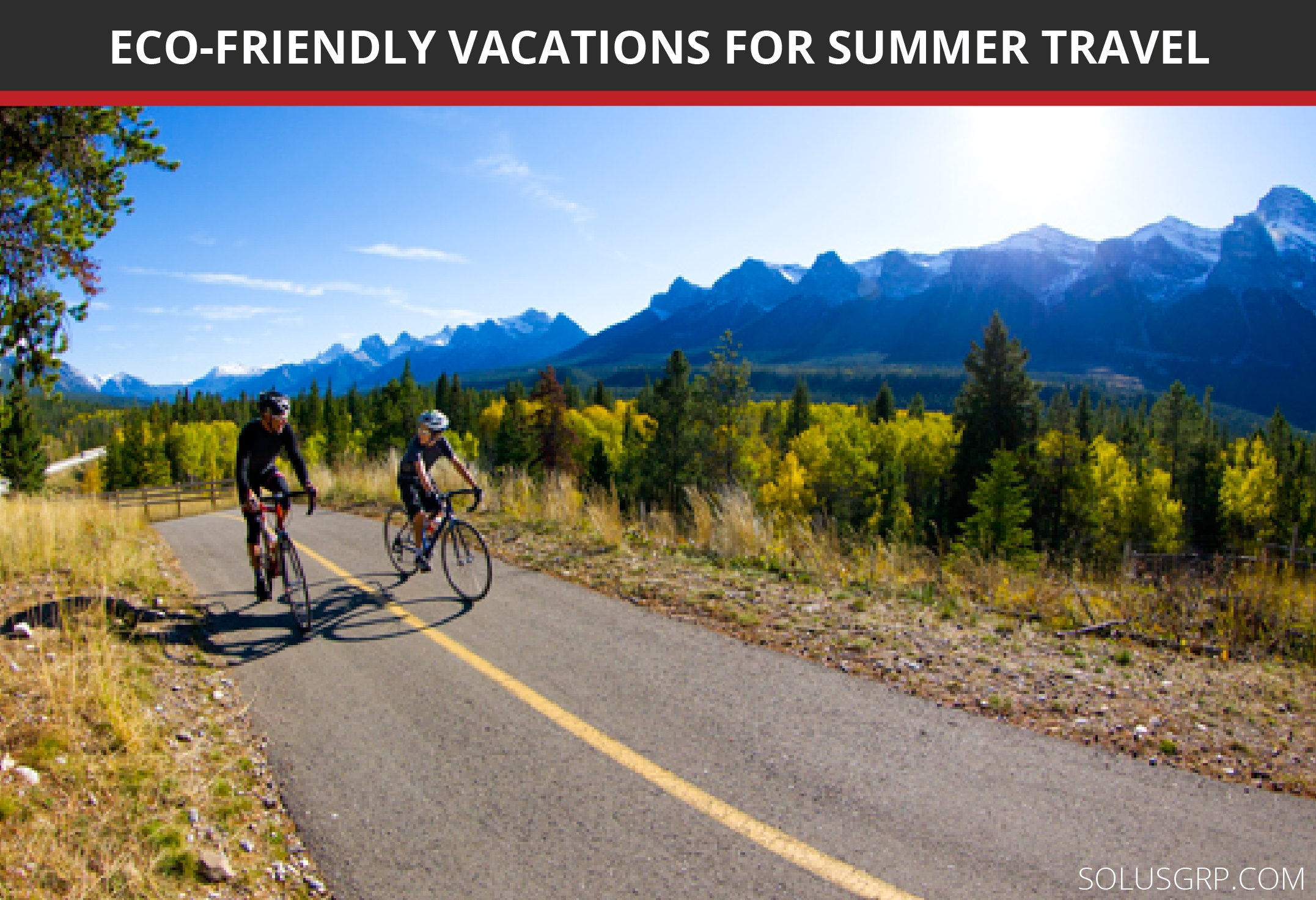We use cookies to make your experience better. To comply with the new e-Privacy directive, we need to ask for your consent to set the cookies. Learn more.
Eco-Friendly Vacations for Summer Travel
It's hard to maintain a small carbon footprint when you're traveling. Airplanes are one of the biggest emitters of CO2, and hotels frequently guzzle energy while they cater to a traveler's every whim. That being said, there are simple things that eco-conscious travelers can do to reduce their impact on the environment.
A flight may be required to reach a destination, but once you arrive, you can rely on eco-friendly modes of transportation like bikes, scooters, or your own two feet. Travelers can also seek out cities or resorts that have a good reputation for green practices. This is especially important when visiting countries that do not have strict laws to protect the environment.
Fortunately, avoiding trips that have a negative impact on the environment doesn't have to be constricting. Rather, it can offer an exciting opportunity to discover eco-friendly destinations. Here are three of our favorite choices:
Biking in the Black Hills
The Black Hills provide some of the most breathtaking scenery in the country, and the entire area is criss-crossed with bike trails. From historic Deadwood and Spearfish Canyon in the north to Buzzard's Roost Lookout in the south, there's a wide variety of natural and manmade attractions waiting for cyclists to find them. 
Out of all the choices, we recommend the Mickelson Trail — South Dakota's first rails-to-trails project. Converted from the abandoned Burlington Northern line that ran from Edgemont to Deadwood, the crushed limestone and gravel path rarely exceeds a four-percent grade, making this an ideal trail for families and inexperienced cyclists.
A tip for those who like to coast rather than pedal — the one-way trip from Deadwood to Edgemont is mostly downhill. There is a four dollar fee for use of the trail (Kids under 12 are free.), but the 109 miles of gorgeous scenery make it well worth the price.
An Island Getaway in South Carolina
If you want a taste of island life without flying to the Caribbean, consider Hilton Head. This golf and tennis hub has worked hard to become a green travel destination. For starters, they gained membership to Tree City USA by promoting the use of native trees and plants for stormwater retention, wildlife habitat, and reduced energy consumption. The city is also a member of Audubon International's Sustainable Communities Program.
Hilton Head has even united to save the endangered loggerhead sea turtle. Residents who live along the beach turn out their lights at 10 pm so the turtles can more successfully navigate during nesting and hatching season. Other wildlife you can glimpse there include alligators, bottlenose dolphins, bobcats, otters, deer, and over 350 bird species.
There're also plenty of golf courses, bike trails and rentals (Hilton Head has a gold-level status from the League of American Bicyclists.), public beaches, and museums and galleries when you've gotten enough sun.
Camping in Hawaii
Hawaii is moving to the forefront of the green energy movement in the U.S. — the 50th state is currently the most oil-dependent in the nation, but it has set a goal to use 100-percent renewable sources by 2045. Visitors can help Hawaii go green by camping at one of the state's many beautiful and affordable campsites.
In general, you must purchase camping permits ahead of time. While this necessitates a good deal of planning, it allows visitors to know exactly where they will be staying throughout a trip. And while campsites aren't necessarily isolated from other campers, they will get you close to some fantastic scenery. For instance, camping at Haena Beach Park puts you at a four-mile hike from the amazing Hanakapi`ai Falls.
Camping in Hawaii can range from just a few bucks per person (for most campsites on Kauai) to $20 per person per night on the Big Island. If that sounds pricey, just remember that the average hotel price is around $250 per night! Also remember that by camping you're helping reduce energy consumption in Hawaii.
Of course, there are tons of other options for eco-friendly vacations.
And you can add a touch of green to just about any vacation spot. For instance, taking a train instead of a plane drastically reduces the amount of energy needed to reach your destination. You can also check websites like Green Key or the Global Sustainable Tourism Council to book an environmentally friendly hotel.
Even making small choices, like bringing a reusable water bottle, helps reduce plastic waste (assuming the local drinking water is potable). But the biggest impact you can have is spending your money on accommodations and services that take environmentalism seriously. With plenty of online resources for green vacations, booking an eco-friendly trip is easier than ever.
